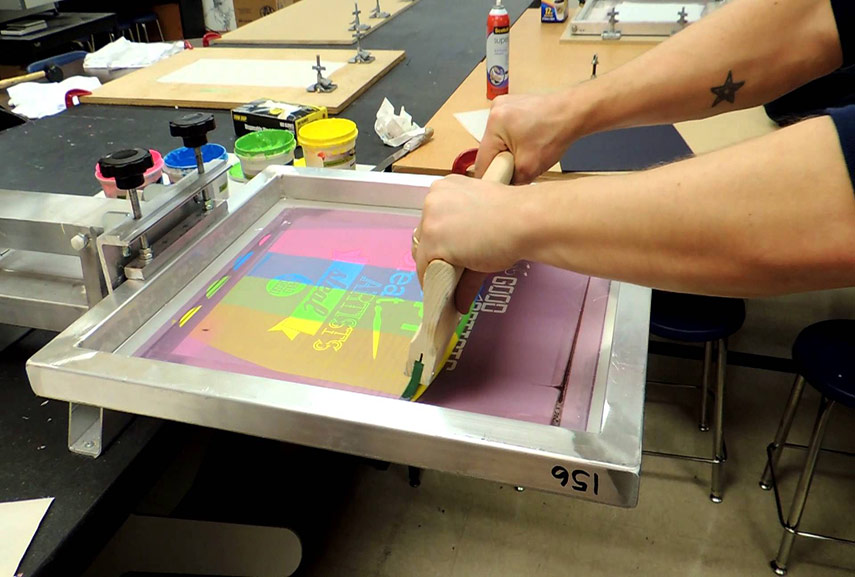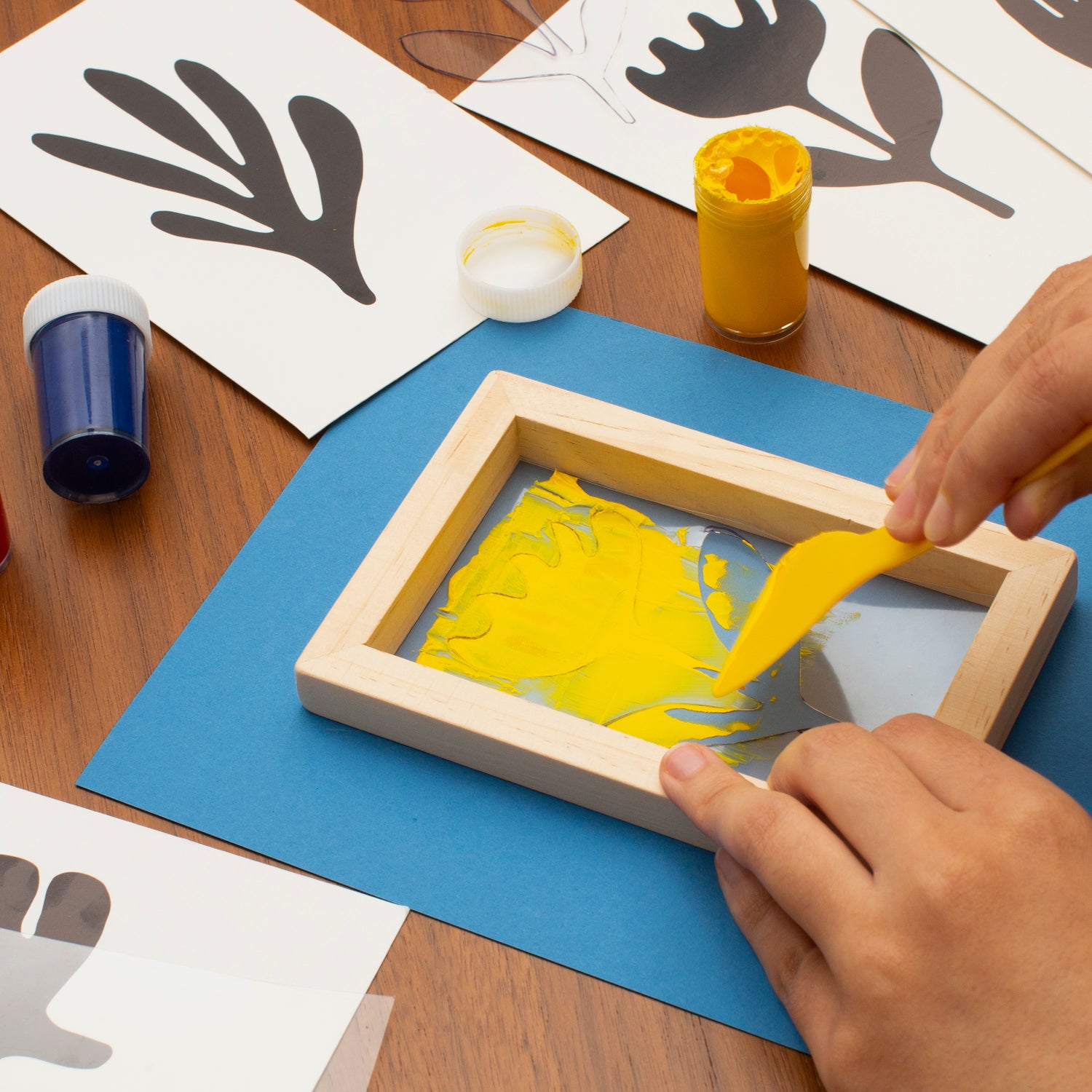ChatGPT said: Everything you should know about 10:9 Design contact for service inquiries
The Crucial Overview to Recognizing Screen Printing and Its Versatile Makes use of
Screen printing has a rich background that goes back to ancient times, advancing into a sophisticated technique made use of throughout numerous markets today. This overview explores the intricacies of the screen printing process, outlining its applications in home, advertising and marketing, and fashion style - 10:9 Design Screen Printing. Understanding these fundamentals can open imaginative possibility for both business and imaginative tasks. The adhering to sections will certainly expose essential tips and strategies to boost one's screen printing ventures
The History of Screen Printing
Although screen printing has roots that trace back centuries, its development reflects the technological and imaginative innovations of different societies. Stemming in old China, the method was at first used for enhancing textiles and later spread to Japan, where it came to be integral to Ukiyo-e woodblock printing. The technique changed to Europe in the 18th century, where it obtained popularity amongst artisans and business printers. The creation of picture solution in the 20th century transformed screen printing, enabling more elaborate styles and better efficiency. Artists like Andy Warhol even more drove its appeal, making use of the tool to develop iconic jobs that blended commercialism and art. By the late 20th century, screen printing had actually developed itself as a flexible strategy, utilized in vogue, marketing, and art. Today, it remains to progress, integrating electronic modern technology and increasing its applications throughout various markets.
The Screen Printing Process Explained
Screen printing transforms creative visions right into substantial styles via a series of precise actions. An image is produced and then transferred onto a screen, generally made of great mesh textile stretched over a structure. A light-sensitive emulsion is related to the screen, which is exposed to light, hardening in locations not covered by the image. After rinsing the unhardened emulsion, a pattern is created.
Next, the screen is placed over the substratum, whether it be fabric, paper, or an additional material. Ink is after that pushed via the open areas of the pattern using a squeegee, transferring the style onto the substratum below. This procedure can be repeated for multiple shades, requiring different screens for each and every tone. Ultimately, the published thing is cured making use of heat to assure the ink adheres correctly, resulting in a durable, vivid style all set for use.
Kinds Of Screen Printing Techniques

In addition, specialized strategies, such as discharge screen printing, remove dye from the fabric to create softer prints, while aluminum foil screen printing applies metal aluminum foil to achieve a shiny coating (10:9 Design Embroidery). Each technique supplies unique attributes, satisfying various creative requirements and production ranges, ultimately increasing the opportunities within the screen printing domain
Applications of Screen Printing in Different Industries

In addition, the signage and advertising and marketing sectors use screen printing for creating captivating displays and banners. This technique permits bold colors and intricate styles that record attention. In electronics, screen printing is used for applying conductive inks to try this site motherboard, important for part connections. The home decoration market welcomes screen printing to create distinctive styles on fabrics and wall surface art. On the whole, screen printing works as a crucial device across varied fields, boosting products with individualized and aesthetically attractive graphics.
Tips for Effective Screen Printing Projects
While embarking on a screen printing project, cautious focus to information can considerably boost the final end result. Choosing high-quality products is crucial; this includes the screen, inks, and substrates. Making use of appropriate mesh matters can influence ink deposition and detail resolution. Preparation is similarly essential; extensive cleaning of screens and appropriate direct exposure times assure crisp prints.
Next off, precise registration is important for multi-color prints. Utilizing placement devices can assist attain specific layering. In addition, testing prints on scrap materials before manufacturing assists identify possible problems without squandering resources.

Often Asked Questions
What Products Are Finest for Screen Printing on Textile?
Cotton and polyester blends are optimal for screen printing on material as a result of their longevity and ink absorption. Furthermore, specialty textiles like silk or canvas can generate special structures and coatings, enhancing the general style top quality.
Exactly how Do I Clean and Maintain Screen Printing Devices?
To keep and cleanse screen printing tools, one need to regularly clean displays with ideal solvents, evaluate squeegees for wear, lubricate moving parts, and shop all things in a completely dry, dust-free atmosphere to extend their life-span.
What Are the Ecological Influences of Screen Printing?
Screen printing can have substantial environmental impacts, including chemical waste from inks and solvents, water use throughout cleansing procedures, and power usage. Lasting techniques and environmentally friendly materials are crucial for decreasing these unfavorable effects.
Can Screen Printing Be Done in the house Successfully?
Screen printing can be efficiently done at home with the right products and techniques. Enthusiasts can develop high quality prints, though success depends on their ability degree, equipment, and understanding of the procedure involved.
What Are the Prices Related To Beginning a Screen Printing Business?

Starting a screen printing service involves expenses for equipment, products, and work space. First costs usually range from a couple of hundred to numerous thousand bucks, depending on the range, quality of equipment, and desired production ability.
Screen printing has an abundant history that dates back to ancient times, developing into an innovative strategy utilized across numerous sectors today. An additional technique, rotary screen printing, employs cylindrical displays, assisting in continual printing on material rolls, therefore boosting effectiveness for large productions. In addition, specialty techniques, such have a peek here as discharge screen printing, remove color from the fabric to produce softer prints, while foil screen printing uses metallic foil to attain a glossy coating. In the style sector, screen printing is commonly used to create vibrant layouts on garments, making it possible for brands to display their distinct designs. Cotton and polyester blends are ideal for screen printing on fabric due to their sturdiness and ink absorption.